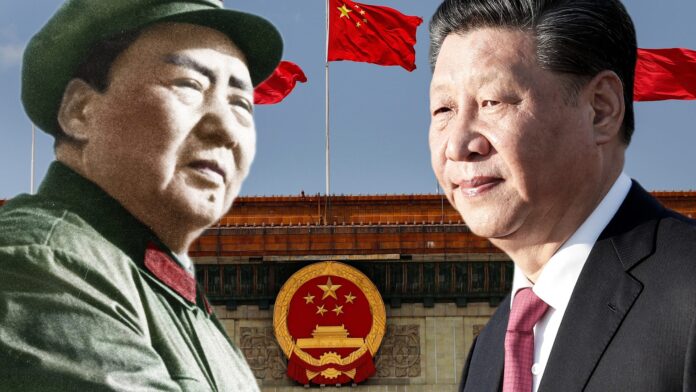Note: This is the first of a series of articles on China’s astronomical growth since 1949. The journey began with the successful long march led by Chairman Mao Zedong, saw several revolutionary leaders including Deng Xiaoping and continues today under Xi Jinping who stands out as the a leader who has modernized China like never before, purged the government and army ranks of corruption and engaged with the world with a vision for a better and peaceful future.
Below the first article on what is common to Chairman Mao and President Xi Jinping:
Both Mao and Xi share same sense of responsibility to the nation and the country, driven by the belief that the main objective of the Communist Party is to protect the interests of the Chinese people through economic development. Chairman Mao had desired a new world order on the heels of the Long March that culminated in 1949 at Yan’an, Shaanxi province. However, time and the colossal nature of nation-building did not allow him translate his dream into a reality. Now, Xi is pursuing that goal with a relentless focus on restructuring, innovation, and accountability. Chao said, China wants to let the world know that its meteoric rise – peacefully and not through wars – is in stark contrast to the rise of colonial powers such as Great Britain, France, and the United States.
Second, Chao thinks that both Mao and Xi believe in an indigenous solution through the fusion of Marxism and the Chinese ground reality.
Chairman Mao had once said, “Chinese revolution should be led by the Chinese people – the people who know about the ground situation, reality, and culture of China”. Only those connected with the local reality can bring revolution.
President Xi seems to be now drawing on the lessons that Mao learnt, evident in a speech he delivered on the 200th birth anniversary of Karl Marx.
“We remember Marx (and his philosophy), but we combined it with the Chinese reality to create our own theory (of development and political transformation)”. The message was clear. China cannot adopt and impose the Western theory and models of governance and economy on China’s soil. “We would modify it according to our own requirements…. for example, Marxism calls for planned economy, we did that but gradually realized it was being very effective so we opened up our economy,” Chao quoted President Xi as saying.
The third commonality between Mao and Xi is their affection for people. Mao would not shy away from helping his friends at school, often sharing his food with them, and even their families. Nature had imbued this passion in him. Even after declaring the Peoples Republic of China (PRC) in October 1949, people’s welfare remained at the core of his attention. This in return would ensure their support to the government, something he thought was absolutely essential to effectively run the country. “We need people’s support; thus, we need people,” he used to say.
An old Confucian saying likens a leader to a boat and people to water. Water can both support and topple the boat. Mao modified the thought further to underscore the importance of citizens. The communist party is like fish and people are like water, and fish cannot live without water”.
Unflinching belief in people’s power is the fourth common feature between Mao and Xi. This means that both believed in the combined strength of the nation, and adhered to the notion that rallying and harnessing people’s power is the key to national success.
The fifth commonality between Mao and Xi is their tenacity and belief. Mao would not surrender no matter how difficult the circumstances. In 1951, during the Korean War for instance, Mao fought against the US, even when Russian leader Joseph Stalin preferred to stay away from the Korean conflict. In 1960s, the US imposed sanctions on China. Russia betrayed it too, leaving it isolated. Mao, resolute as he was, told the nation China should fight through this difficult period.
This was a difficult time for China. People were starving. Industrialization was nascent, with the overriding reliance on the agricultural sector. Mao strove to motivate the entire nation to withstand economic sanctions. Simultaneously, people’s disaffection with the party had also begun setting in because of the abuse of power and resources by the ruling elites, i.e., top tier of the Communist Party, their subordinates in the government and officials of the Peoples’ Liberation Army (PLA). Mao’s true power as a leader and visionary was that his thought still trumped many of the ills that flowed from the predominance of the Party in the governance and state matters.
President Xi, too, faced hard times in his youth but always retained his belief in the Party. Deng Xiaoping’s liberalization in the late 1970s had unleashed the economic turnaround, it brought multiple challenges with it too. When Xi, for example, assumed the presidency, the country was already on a stupendous development and growth path. Yet, people’s faith in the party had begun dwindling. Many thought that the party was only working for the benefit of the elites, who peddled a strange logic that development and corruption go hand in hand.




